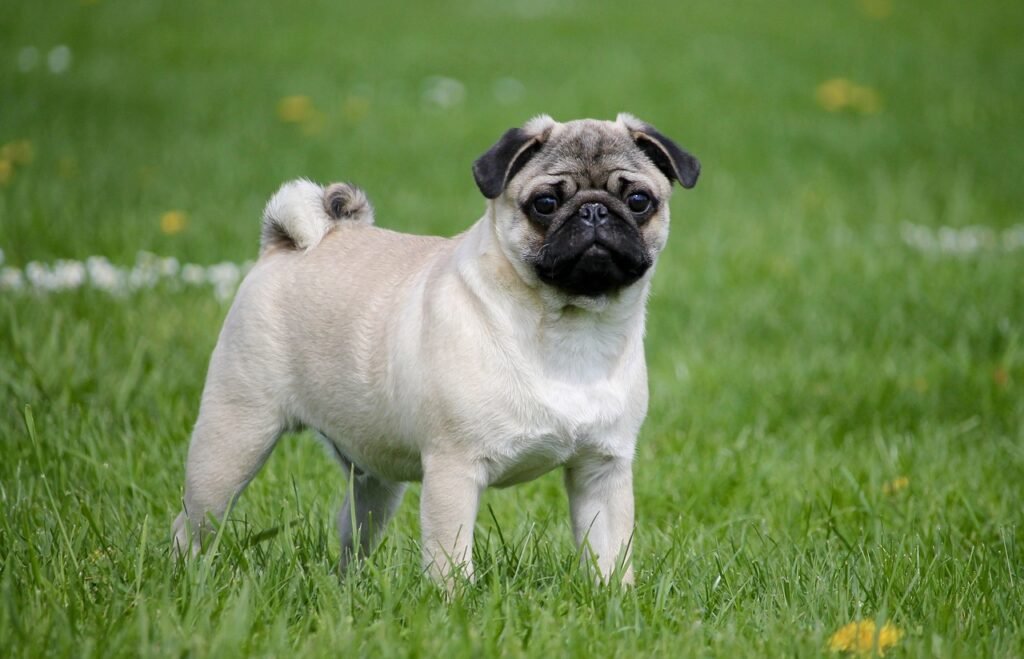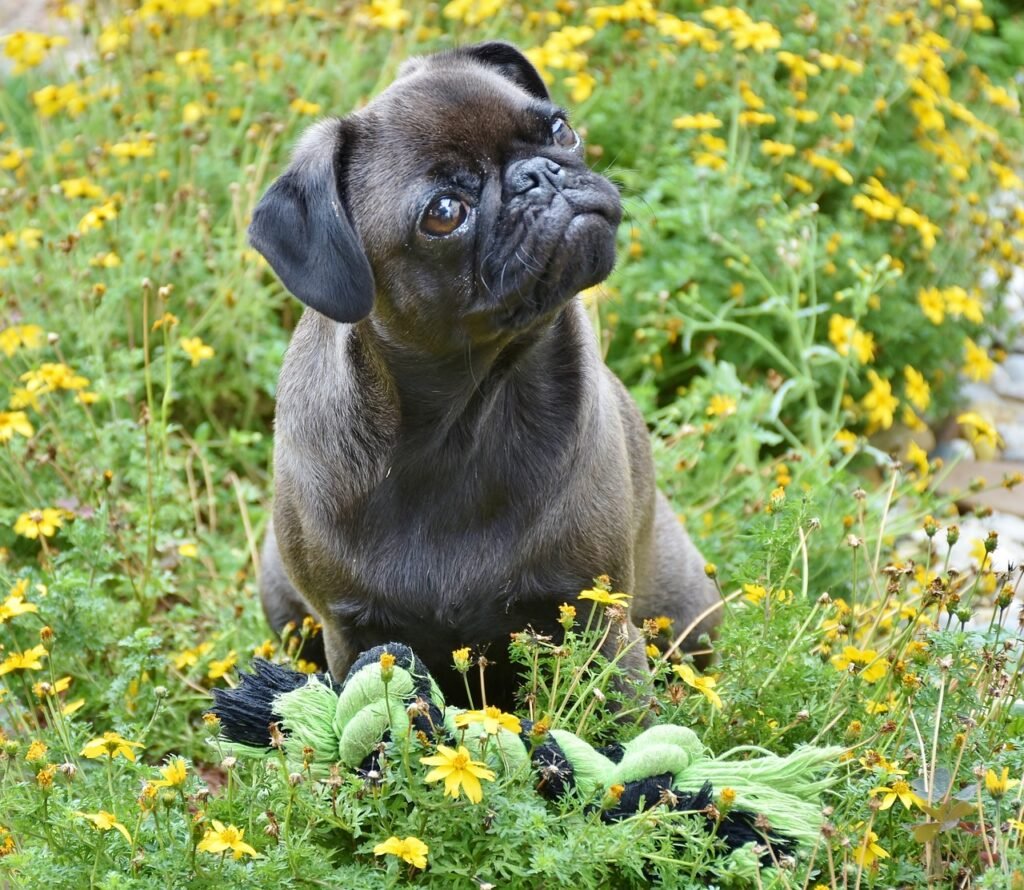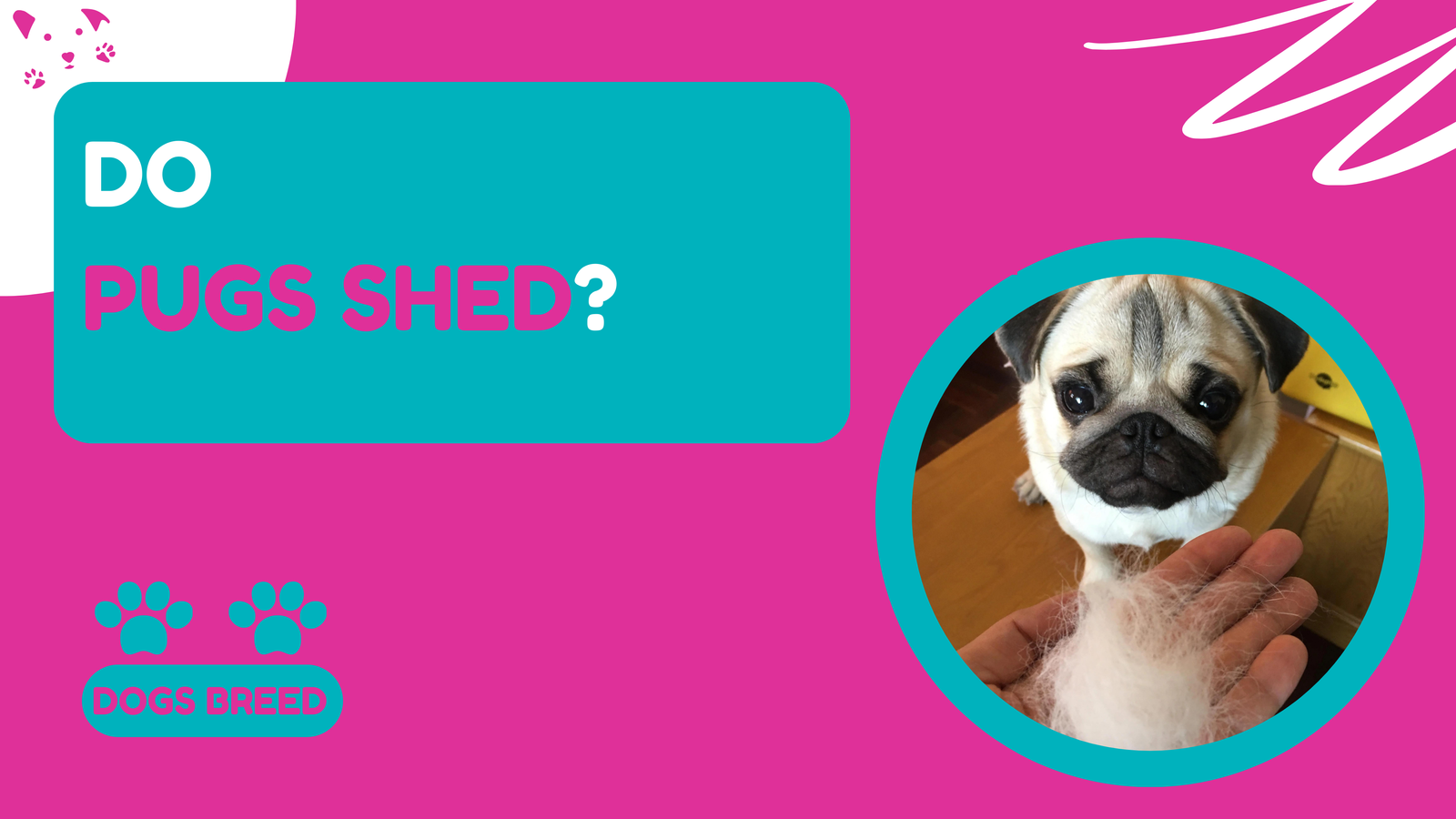Pugs are one of the most beloved dog breeds, known for their charming personalities and distinctive appearances. If you’re a pug owner or considering becoming one, you might be curious about their shedding habits.
Understanding how much pugs shed and how to manage it is crucial for maintaining a clean home and a healthy pet.
Understanding Pug Coat Characteristics

Pugs have a unique coat that plays a significant role in their shedding patterns. Generally, pugs have short, dense fur that can come in two types: single or double coats.
Single vs. Double Coats
- Single-Coated Pugs: These pugs have a single layer of fur, which is usually less dense and results in lighter shedding.
- Double-Coated Pugs: Double-coated pugs have an additional undercoat beneath their top layer of fur, leading to more significant shedding, particularly during seasonal changes.
Do Pugs Shed?
Yes, pugs do shed. While their short fur might give the impression of minimal shedding, pugs can shed quite a bit.
Understanding their shedding behavior can help you prepare for and manage the fur around your home.
General Shedding Behavior
Pugs shed throughout the year, with more noticeable shedding during spring and fall. This seasonal shedding is due to the natural process of changing their coats to adapt to the temperature variations.
Factors Influencing Pug Shedding
Several factors can influence the amount of shedding in pugs, including genetics, diet, health conditions, and their living environment.
Genetics
Some pugs are predisposed to shedding more due to their genetic makeup. If a pug’s parents were heavy shedders, the likelihood is that they will be too.
Diet
A pug’s diet plays a crucial role in their coat health. Poor nutrition can lead to dry skin and excessive shedding. Ensuring your pug has a balanced diet rich in omega-3 fatty acids can promote a healthier coat.
Health Conditions
Certain health conditions, such as skin infections or allergies, can cause increased shedding. Regular vet visits can help identify and treat these issues promptly.
Environment
The environment your pug lives in also affects their shedding. Indoor pugs might shed differently compared to those spending a lot of time outdoors, especially if the climate is dry or the air inside your home is conditioned.
How Much Do Pugs Shed?

Compared to other breeds, pugs are moderate to heavy shedders. While they may not shed as much as some long-haired breeds, the amount of fur they lose can still be significant.
Daily Shedding Expectations
Pug owners should expect to find fur around the house daily. Regular grooming can help control this, but it’s something all pug owners must get accustomed to.
Managing Pug Shedding
Managing your pug’s shedding involves a combination of regular grooming, proper diet, and overall health maintenance.
Regular Grooming Techniques
Regular grooming is essential to control shedding. Brushing your pug several times a week can help remove loose fur and reduce the amount that ends up on your furniture.
Best Brushes for Pugs
Investing in a good quality brush is key. A bristle brush or a de-shedding tool specifically designed for short-haired dogs can be very effective.
Bathing Tips
Regular baths can also help manage shedding. Use a dog shampoo that promotes skin health and reduces shedding. Avoid over-bathing, as it can dry out the skin and lead to more shedding.
Diet and Nutrition Impact on Shedding
A well-balanced diet is vital for reducing shedding in pugs. Foods rich in omega-3 and omega-6 fatty acids, such as fish oil, can help maintain a healthy coat.
Importance of a Balanced Diet
Feeding your pug a high-quality diet ensures they get all the necessary nutrients to keep their coat shiny and healthy. Consult your vet to determine the best food options for your pug.
Health Issues Related to Excessive Shedding
Excessive shedding can sometimes indicate underlying health problems. It’s essential to monitor your pug’s shedding and consult a vet if you notice significant changes.
Common Skin Conditions in Pugs
Pugs are prone to skin conditions like dermatitis and mange, which can cause increased shedding. Treating these conditions promptly can help control shedding.
Allergies and Their Impact on Shedding
Allergies, whether food-related or environmental, can lead to excessive shedding. Identifying and managing these allergies is crucial for maintaining your pug’s coat health.
Environmental Factors and Shedding

The environment plays a significant role in how much a pug sheds. Factors like humidity, temperature, and air quality can influence shedding patterns.
Indoor vs. Outdoor Living
Pugs living indoors might shed less consistently compared to those spending significant time outdoors. Keeping your home environment comfortable with proper humidity levels can help manage shedding.
Seasonal Changes
During spring and fall, pugs tend to shed more as they transition between their winter and summer coats. Regular grooming during these periods can help manage the increased shedding.
Preventive Measures for Excessive Shedding
Taking preventive measures can help reduce excessive shedding and keep your pug’s coat healthy.
Regular Vet Check-Ups
Regular vet check-ups are essential for monitoring your pug’s overall health and catching any potential issues that could lead to excessive shedding.
Supplements and Vitamins
Supplements like fish oil or omega-3 fatty acids can promote a healthy coat and reduce shedding. Always consult your vet before adding any supplements to your pug’s diet.
Tools and Products to Manage Shedding
There are various tools and products available to help manage pug shedding effectively.
Recommended Grooming Tools
Invest in grooming tools like a high-quality bristle brush, a de-shedding tool, and grooming gloves. These can help remove loose fur and keep your pug’s coat healthy.
Anti-Shedding Shampoos and Conditioners
Using anti-shedding shampoos and conditioners during baths can help reduce the amount of fur your pug sheds. Look for products with natural ingredients that promote skin health.
FAQs about Pug Shedding
Do Pugs Shed All Year Round?
Yes, pugs shed throughout the year, with more noticeable shedding during seasonal changes in spring and fall.
How Can I Minimize My Pug’s Shedding?
Regular grooming, a balanced diet, and maintaining overall health are key to minimizing your pug’s shedding.
Are There Any Medical Treatments for Excessive Shedding in Pugs?
If excessive shedding is due to an underlying health condition, your vet may recommend specific treatments or medications to address the issue.
Is Pug Shedding Worse Than Other Breeds?
Pug shedding can be moderate to heavy, but it varies among individual dogs. It’s not necessarily worse than other breeds but can be significant due to their short, dense fur.
Can a Pug’s Shedding Indicate a Health Problem?
Yes, sudden or excessive shedding can indicate a health issue. Consult your vet if you notice unusual shedding patterns.
Conclusion
Understanding and managing pug shedding is essential for maintaining a clean home and a healthy pet. With regular grooming, a balanced diet, and proper health care, you can effectively control your pug’s shedding and keep their coat looking its best.

